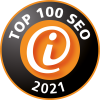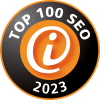Bing is the second most popular search engine in the western world after Google. After an update of their guidelines, Bing announced the factors that need to be considered since they have an influence on rankings. Outside the basic factors, search engines often differ in their guidelines.
In contrast to Google, Bing also actively includes aspects of authorship and user engagement metrics in their ranking assessment. For webmasters and SEO experts, knowledge of the new guidelines is essential and they need to familiarize themselves with them, even though Google is still number one among search engines. In Germany, Bing’s market share is four percent according to Statcounter. Compared to Google, this percentage is relatively low. Other search engines such as Ecosia or DuckDuckGo, however, have values below one percent, whereas Bing represents notable numbers.
After Google started supporting the rel=”sponsored” or rel=”ugc” attributes last year, which provide crawlers with more content, Bing followed suit with their current update. Christi Olson commented on social media on July 1 that the attributes are still in the editing process on their way to becoming a ranking signal for crawlers and search engines, and that the strength of the signal’s score depends on the user’s utilization or customization; so far, the weighting of the attributes is not particularly high yet.
In addition to the ones that are already known to be relevant for rankings and SEO, Bing also listed the six most relevant ranking factors, which are:
1. Relevance: Here, websites are ranked according to how well the content of the webpage matches the user’s search query. Value is placed here, for example, on terms that are used on the website, whether this is within the content or in the link. Synonyms, semantic equivalents, and abbreviations are also taken into account by Bing.
2. Transparency: The credibility and quality of the website are also included in the ranking by Bing. This includes, for example, citing sources for all quotations and content that has not been drafted by the author himself. In addition, content must be displayed in full and the authorship must be specified. #
3. User interaction: The interactions between the user and the search result are also included in the assessment. For example, how long the user has to click to get to their “search target” is checked, as well as whether they find what they are looking for, and whether they stay on the website for a longer period of time or leave it again right away. Bing also asks the question of whether users find the content they needed with their search query or whether they need to modify their search.
4. Currency: Bing attaches importance to how up-to-date content is. More timely and relevant content, therefore, ranks better.
5. Location: the location of the user and the country or city in which the website is hosted are matched in most cases.
6. Page load speed: This is also extremely important for Bing, as it is for all other search engines. Large loading times of web pages ensure that the user bounces faster and the bounce rate increases. In addition, slow load speed of web pages has a negative impact on user experience (this should be one of your highest priorities!).
In addition to the ranking factors, Bing also lists activities that can negatively affect the ranking or even lead to penalties. These include cloaking, automated follower settings and automatically-generated content, the use of too many keywords, thin affiliation, etc.
If you adhere to Bing’s guidelines, many of which are also valid for other search engines, webmasters and SEO experts have a good chance of being positioned at the top of the SERPs with their content.












